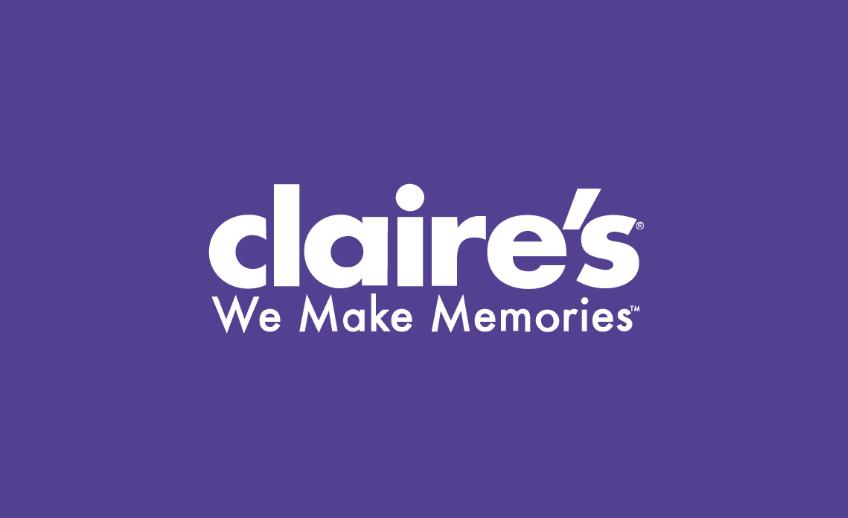IB Business Management
UNIT 6: IB Business Management Toolkit (BMT)
PORTERS GENERIC STRATEGIES (HL)
WHAT ARE PORTERS GENERIC STRATEGIES?
Porter reckoned that for success, every business must have a competitive advantage to stop the erosion of profits by rivals. A competitive advantage could be any factor that makes a business more appealing to customers. This could be through a unique selling point / proposition (USP) or the ability to produce goods or services more efficiently or cost-effectively than competitors!
Porter identified three broad and generic strategies available to any business for maintaining a competitive advantage: (i) cost leadership, (ii) differentiation, and (iii) focus.
From this idea, he created his own model (right)

WHAT'S ARE THE FOUR QUADRANTS
The four quadrants of Porter’s generic strategies are strategic approaches that businesses can adopt to achieve a competitive advantage. These strategies, developed by Porter are,

#1 'COST LEADERSHIP'
Cost leadership is a generic strategy that aims to establish competitive advantage through lowering costs. To become the lowest cost supplier of a product within the market.
To achieve this, a company needs to focus on reducing operational costs significantly. Achieving this might require large scale production to achieve economies of scale!

#2 'DIFFERENTIATION'
When a firm makes its mass-market products distinct from those of its competitors. The focus is on quality rather than cost. This strategy enables a premium price to be charged and higher added value per unit. Nike is a good example, charging premium prices having successfully differentiated itself! The trainers pictured are part of Nike’s recycled range, using material like recycled plastics! Curiously, even though old junk is used in production, selling prices are higher than normal!

#3 FOCUS STRATEGY (COST FOCUS)
Claire’s is a high street jewelry shop for young teenagers and kids. Prices are set low, and the stores appeal is colour and light.
Costs can be kept low by focusing on a limited number of products!
This has been a successful niche for Claires!

#4 FOCUS STRATEGY (DIFFERENTIATION FOCUS)
Here, a business targets a niche (or single segment) of the market.
Differentiation focus (if successful) can be a highly profitable strategy due to the high prices. Rolex is one example, though, an associated issue could be the relatively small size of the market, compared to Swatch!
CASE STUDY: UNGLAMOROUS BUT SUCCESSFUL, ALDI
Aldi is a highly successful discount supermarket chain, operating in more than 12,000 stores across 18 countries in Europe, America and China. Founded in 1946, the company focuses on selling mainly “no frills” (unbranded or its own branded) food and non-food products at affordable prices to gain a competitive advantage. Approximately 85% of Aldi’s products are specifically manufactured for the company, and it claims to offer items for as much as 50% less than some competitors.
Aldi implements various approaches to pass on cost savings to customers:
- Aldi focuses on offering a significant portion of private-label or store-branded products and controlling costs tightly! Essentially it is insourcing the production, which reduces costs on all fronts!
- Aldi strategically limits its product range, emphasizing volume over variety. This simplifies inventory management, reduces storage costs, and allows the company to negotiate better deals with suppliers for larger quantities of specific items.
- Aldi maintains a highly efficient supply chain, optimizing logistics and minimizing distribution costs. The company’s emphasis on simplicity, quick turnaround times, and direct relationships with suppliers helps in reducing transportation and warehousing expenses.
- No-Frills Store Layout:
- Aldi stores have a no-frills layout, emphasizing simplicity and functionality without elaborate shelving!
- Aldi operates relatively small stores, helping to keep down the cost of rent and operational expenses.
- Aldi predominantly stocks fast-moving consumer goods (FMCGs), which are everyday products that customers frequently purchase.
- Aldi adopts a low-budget marketing strategy, relying on cost-effective channels such as local radio advertisements and social media platforms.
- Aldi maintains an efficient labour model with a focus on productivity.
- Aldi employs lean management practices throughout its operations, minimizing waste and maximizing efficiency.
#1 CASE STUDY QUESTIONS: ALDI
- Define Porter’s generic strategies. [2]
- Outline (with reference to Aldi) the meaning of competitive advantage [2]
- Suggest how (with reference to Porters model) Aldi could run the risk of becoming ‘stuck in the middle’ [3]
- Explain two advantages and one disadvantage of a cost leadership strategy for Aldi [6]
- Analyse the general usefulness (using information in the red box below to help you) of Porters generic strategies model [6]



Porter's Generic Strategies Information
Clear Strategic Direction:
- Porter’s generic strategies provide businesses with clear and distinct strategic directions. Whether pursuing cost leadership, differentiation, or focus, companies can align their efforts to a specific path, avoiding strategic ambiguity.
Competitive Advantage:
- The strategies help businesses establish and maintain a competitive advantage in the market. Cost leadership, differentiation, and focus each offer a unique approach for companies to differentiate themselves and create value for customers.
Resource Allocation:
- By choosing one of the generic strategies, companies can allocate resources effectively. Whether investing in cost-cutting measures, innovation, or specialization, resource allocation becomes more focused and strategic.
- Adopting one of the generic strategies encourages operational efficiency. Businesses can streamline processes, optimize resources, and enhance productivity to align with their chosen strategic approach.
Customer Focus:
- Porter’s strategies emphasize understanding customer needs and preferences. This customer-centric approach helps businesses tailor their products or services, enhancing customer satisfaction and loyalty.
Flexibility and Adaptability:
- Companies can adjust their strategies based on market conditions while still adhering to the overarching generic strategy. This flexibility allows for adaptation to changes in the business environment.
Risk Management:
- Porter’s generic strategies provide a framework for assessing and managing risks. Businesses can make informed decisions on whether to compete on cost, differentiation, or focus, considering their risk tolerance and industry dynamics.
Benchmarking:
- Businesses can benchmark their performance against competitors pursuing similar strategies. This comparative analysis helps identify areas for improvement and innovation to stay ahead in the market.
Communication and Branding:
- Adopting a clear generic strategy facilitates effective communication both internally and externally. It helps convey a consistent message to employees, customers, and other stakeholders, reinforcing the brand identity.
Market Positioning:
- Porter’s generic strategies guide businesses in positioning themselves effectively within the market. Whether aiming to be a low-cost leader, a provider of unique products, or a specialist in a niche, companies can establish a distinct market position.
Focus on Sustainable Growth:
- Businesses can use the generic strategies to pursue sustainable growth. By aligning their operations with a specific strategy, companies can avoid pitfalls associated with being stuck in the middle without a clear direction.
Strategic Decision-Making:
- The generic strategies assist in strategic decision-making by providing a framework for evaluating options. Businesses can make informed choices that align with their overall strategic direction.
Overemphasis on Cost Reduction:
- One disadvantage is an overemphasis on cost reduction in the pursuit of cost leadership. Companies might cut costs to the detriment of product quality or innovation, potentially harming long-term competitiveness.
Imitation by Competitors:
- Competitors may quickly imitate successful strategies, diminishing the uniqueness of a firm’s chosen approach. This can lead to increased competition and erode the initial advantage gained through cost leadership or differentiation.
Dynamic Market Conditions:
- Porter’s model assumes stability in market conditions. In dynamic and rapidly changing markets, rigid adherence to a single generic strategy may hinder a company’s ability to adapt quickly to emerging trends and disruptions.
Niche Market Limitations:
- While focus strategies can be effective, they may limit growth opportunities. Depending solely on a niche market can be risky if customer preferences or market dynamics change unexpectedly.
Market Price Sensitivity:
- Cost leadership strategies are highly dependent on maintaining low prices. If cost advantages erode or if customers become less price-sensitive, the strategy may become less effective.
Inflexibility in Strategy Switching:
- Switching from one generic strategy to another can be challenging. Companies may find it difficult to shift their entire business model if market conditions or internal factors necessitate a change.
Risk of Stuck in the Middle:
- Failing to fully commit to either cost leadership or differentiation can lead to being “stuck in the middle.” This lack of a clear strategic focus may result in a loss of competitive advantage.
Neglect of Innovation:
- Pursuing cost leadership may lead companies to focus primarily on cost-cutting measures rather than investing in innovation. Neglecting innovation can hinder long-term sustainability and market relevance.
Customer Erosion:
- Over time, customers may become less responsive to a firm’s differentiation strategy if competitors successfully emulate or surpass the unique features. This erosion of differentiation can impact a company’s ability to command premium prices.
Dependency on External Factors:
- External factors, such as changes in technology, regulations, or the economy, can significantly impact the effectiveness of chosen strategies. Dependence on external conditions can make strategies vulnerable to unforeseen challenges.
Complexity in Implementation:
- Implementing and sustaining a chosen strategy may be complex, requiring significant organizational changes. Resistance from employees or management challenges can hinder successful strategy execution.
Neglect of Customer Relationships:
- Overemphasis on cost leadership or differentiation might divert attention from building strong customer relationships. Neglecting customer engagement can lead to reduced customer loyalty and satisfaction.
Ryanair, an Irish airline, has successfully positioned itself as a low-cost carrier, aligning with the principles of cost leadership strategy in the IB Business Management syllabus. Here’s an overview of how Ryanair achieved this distinction:
Simplified Operations:
- Ryanair streamlined its operations to reduce costs. This involved using a single aircraft model (Boeing 737) to simplify maintenance, training, and purchasing, leading to operational efficiency.
No-Frills Service Model:
- The airline adopted a no-frills approach, offering basic services at a low cost. Passengers pay for additional services, such as meals and baggage, allowing Ryanair to keep base ticket prices competitive. No flight entertainment, no reclining seats and a very basic interior. No seats were issued to reduce complexity! The owner even floated the idea of not having toilets onboard!
- Ryainair also generated more revenue by selling lots of extras at the time of booking, like priority seats, extra legroom and purchasing more baggage!
- There is no business or first class or priority boarding
Secondary Airports:
- Ryanair strategically chose secondary airports, often with lower landing fees and operational costs, instead of primary airports in major cities. This decision helped reduce expenses and offered cost advantages.
High Aircraft Utilization:
- Ryanair focused on maximizing aircraft utilization by minimizing turnaround times at airports. This allowed the airline to increase the number of flights per day and generate more revenue from each aircraft.
Direct Sales and Online Booking:
- Ryanair heavily promoted direct sales through its website, eliminating the need for travel agents and reducing distribution costs. The emphasis on online booking also helped in cutting administrative expenses.
Point-to-Point Model:
- Unlike traditional hub-and-spoke models, Ryanair adopted a point-to-point model, connecting passengers directly between smaller airports. This reduced the complexity of operations and increased efficiency.
Cost-Conscious Culture:
- Ryanair fostered a cost-conscious corporate culture, emphasizing efficiency and cost reduction at all levels of the organization. This included negotiations with suppliers for lower costs and careful management of overhead expenses.
Aggressive Marketing and Promotions:
- The airline engaged in aggressive marketing and promotional strategies to attract price-sensitive customers. This included frequent promotions, advertising low fares, and creating a perception of affordability.
Fleet Negotiations:
- Ryanair negotiated bulk aircraft orders with manufacturers, securing favorable pricing for its fleet. This bulk purchasing power contributed to lower per-unit costs for each aircraft.
- Economies of scale – Operating on a larger scale / producing more output can allow firms to gain from lower per unit costs. These cost-saving benefits allow the business (Ryanair in this case) to charge lower prices whilst maintaining their profit margins. Ryanair famously offered tickets for as low as £1. However, as you might expect, taxes and extras significantly increased this headline price! However, as a marketing tool, it was very effective!
- Improved supply chains – Having more efficient methods of distribution also help to reduce costs of production. Some businesses own their suppliers (through vertical integration), and avoid paying a supplier. Macdonald’s have famously done this by buying up farms and land (backwards vertical integration).
- Relocation – A business can be located nearer to its suppliers and/customers in order to reduce transportation and distribution costs.
- ‘Insourcing’ production – As a strategy, this may yield results. This effectively reduces the costs of production. However, this ties into the cost to buy versus cost to make (Unit 5.6 HL) which is a difficult assessment to make! Even if a firm can produce the item more cheaply by ‘insourcing’ there is still a time cost and a management cost of oversseing the production!
Nike has successfully implemented a differentiation strategy within Porter’s generic strategies model, as outlined in the IB Business Management syllabus. Here’s an overview of how Nike has distinguished itself through differentiation:
Innovative Product Design:
- Nike is renowned for its innovative and unique product designs. The company invests heavily in research and development to create cutting-edge athletic footwear that stands out in terms of aesthetics, performance, and technology.
Brand Image and Marketing:
- Nike has built a powerful brand image associated with athleticism, performance, and inspiration. Through impactful marketing campaigns featuring high-profile athletes, the company has created a strong emotional connection with consumers, differentiating itself from competitors.
Technological Advancements:
- Nike continually introduces technological advancements in its footwear, enhancing performance and comfort. Features such as Nike Air technology and Flyknit material showcase the company’s commitment to innovation and product differentiation.
Exclusive Collaborations:
- Nike engages in collaborations with renowned designers, celebrities, and athletes to create limited-edition and exclusive footwear lines. Collaborations with Michael Jordan (Air Jordan) and other influencers add a unique and sought-after dimension to Nike’s product offerings.
Customization and Personalization:
- Nike allows customers to customize and personalize their footwear through platforms like Nike By You (formerly NikeiD). This customization option enables consumers to create unique, one-of-a-kind shoes, enhancing the differentiation aspect of Nike’s products.
Sponsorship and Endorsements:
- Nike strategically aligns itself with top athletes and sports teams, leveraging their endorsements to differentiate its products. Associating with sports icons like LeBron James and Cristiano Ronaldo enhances the perceived quality and performance of Nike footwear.
Environmental Sustainability:
- Nike has incorporated sustainability into its differentiation strategy. Initiatives such as using recycled materials and adopting environmentally friendly production processes contribute to a positive brand image and appeal to environmentally conscious consumers.
Wide Product Range:
- Nike offers a diverse range of footwear catering to various sports, activities, and lifestyles. This wide product range ensures that consumers can find specialized shoes for different purposes, reinforcing the brand’s commitment to meeting diverse customer needs.
Retail Experience:
- Nike’s retail stores and online platform provide a unique and immersive shopping experience. The presentation of products, interactive displays, and emphasis on customer engagement contribute to the overall differentiation of the Nike brand.
Athlete-Driven Performance:
- Nike’s differentiation strategy emphasizes performance-driven attributes. The focus on creating footwear that enhances athletic performance and supports athletes in their pursuits differentiates Nike from competitors in the sportswear industry.
By incorporating these elements into its business strategy, Nike has successfully implemented a differentiation strategy within Porter’s model. The company’s ability to continuously innovate, build a strong brand image, and offer unique and high-quality products has allowed it to stand out in the competitive footwear market.
Stuck in the middle is a common problem for businesses who try to pursue a mixture of strategies and end up lacking a clear differentiation in the marketplace!
Porter suggests that it may not be possible in the long term to mix these three generic strategies!
Porter termed companies who tried to do this as, ‘stuck in the middle’!
SUGGESTED ANSWERS
Define Porter’s generic strategies. [2]
Porter’s generic strategies refer to the fundamental approaches that businesses adopt to gain a competitive advantage in the marketplace. Michael Porter identified three generic strategies:
Cost Leadership: Aiming to be the lowest-cost producer in the industry, offering products or services at the lowest possible prices.
Differentiation: Focusing on creating unique and distinct products or services, often at a premium price, to stand out from competitors.
Focus (or Niche): Concentrating on serving a specific market segment or niche effectively, either through cost leadership or differentiation.
2. Outline (with reference to Aldi) the meaning of a competitive advantage [2]
A competitive advantage refers to a unique set of qualities or capabilities that allows a company to outperform its rivals in the industry. In the context of Aldi, a competitive advantage could be its efficient supply chain, cost-effective store layout, or a specific product offering that distinguishes it from other supermarkets. Essentially, it is something that gives Aldi an edge over competitors and contributes to its success in the market.
3. Suggest how Aldi could run the risk of becoming ‘stuck in the middle’ [3]
Aldi could run the risk of becoming ‘stuck in the middle’ if it fails to clearly differentiate its strategy. If Aldi attempts to simultaneously pursue both cost leadership and differentiation without excelling in either, it may find itself in a precarious position. For example, if Aldi raises its prices without providing significant differentiation, it may lose its cost-conscious customer base. Conversely, if it fails to maintain cost leadership while attempting differentiation, it could face challenges in competing with both low-cost and differentiated competitors.
4. Explain two advantages and one disadvantage of a cost leadership strategy for Aldi [6]
Advantages:
Economies of Scale: By focusing on cost leadership, Aldi can achieve economies of scale through bulk purchasing, manufacturing efficiency, and streamlined processes. This results in lower average costs per unit, contributing to overall cost leadership.
Price Competitiveness: Cost leadership enables Aldi to offer products at lower prices than competitors, attracting price-sensitive consumers. This can lead to increased market share and customer loyalty.
Disadvantage:
- Vulnerability to External Factors: A cost leadership strategy may make Aldi vulnerable to external factors such as fluctuations in commodity prices or changes in regulations. External shifts that impact costs could undermine the cost advantage and erode profitability.
5. Analyse the general usefulness of the Porters generic strategies model, which should incorporate pros and cons of using the model [6]
Pros:
Clarity in Strategy: Porter’s model provides a clear framework for businesses to choose and communicate their strategic direction, fostering a focused and aligned organizational approach.
Competitive Advantage Identification: The model helps businesses identify and understand the sources of competitive advantage, aiding in strategic decision-making.
Flexibility: Businesses can use the model to switch between strategies or combine elements strategically based on market conditions.
Cons:
Simplicity Oversimplification: Critics argue that the model oversimplifies the complexities of real-world business situations, especially in industries with rapidly changing dynamics.
Dynamic Markets: The model may struggle to address the challenges posed by rapidly evolving markets, technological disruptions, and unpredictable consumer behavior.
Risk of Stagnation: Overreliance on the generic strategies model may lead to a lack of innovation and a failure to adapt to changing market demands.
In conclusion, while Porter’s generic strategies model provides a valuable framework for strategic analysis, its application should be mindful of its limitations in capturing the dynamic and complex nature of modern business environments.
Porters generic strategies and the real world
In IB Business Management, Unit 6 BMT introduces Porter’s Generic Strategies, a pivotal tool in the Business Management Toolkit. This framework empowers companies to carve out a competitive edge through three primary avenues: cost leadership, differentiation, and focus.
Cost Leadership entails becoming the industry’s low-cost producer. Take Walmart, for instance. By streamlining operations and leveraging massive buying power, Walmart offers products at unbeatable prices, appealing to cost-conscious consumers and securing a dominant market position.
Differentiation focuses on delivering unique products or services that command premium prices. Consider Apple. Through innovative design and a robust ecosystem, Apple has cultivated a loyal customer base willing to pay more for its distinctive offerings.
Focus targets a specific market niche, tailoring strategies to serve a particular segment exceptionally well. Rolls-Royce, for example, concentrates on the luxury automobile sector, providing bespoke vehicles that cater to an exclusive clientele.
However, missteps occur when companies lack a clear strategic direction, leading them to become “stuck in the middle.” This scenario arises when a firm fails to effectively pursue one of the generic strategies, offering products that are neither cost-competitive nor uniquely differentiated. Such firms often struggle with profitability and market share, as they lack a clear value proposition to attract customers.
Understanding and applying Porter’s Generic Strategies is crucial for students of IB Business Management. It bridges theoretical concepts with real-world business dynamics, illustrating how strategic clarity can propel companies to success, while ambiguity can lead to underperformance.
